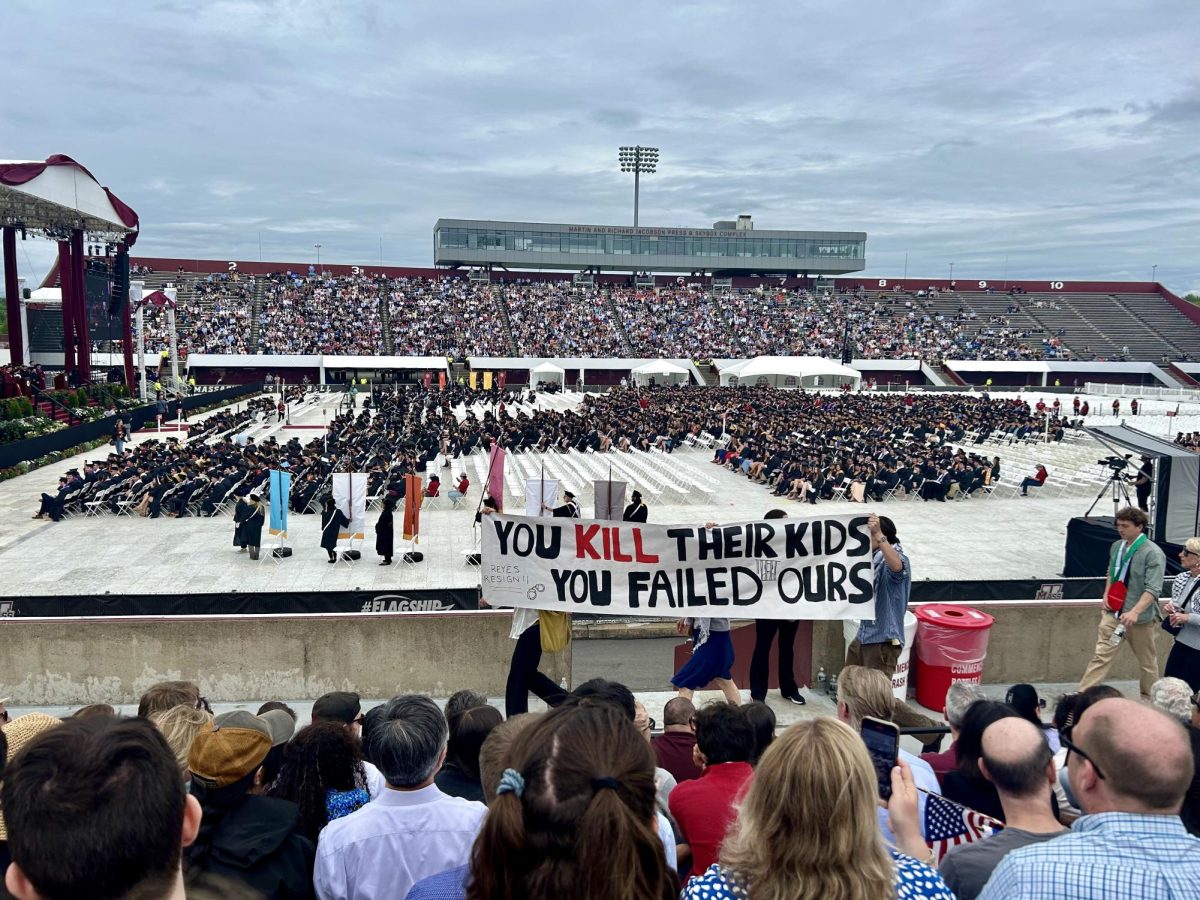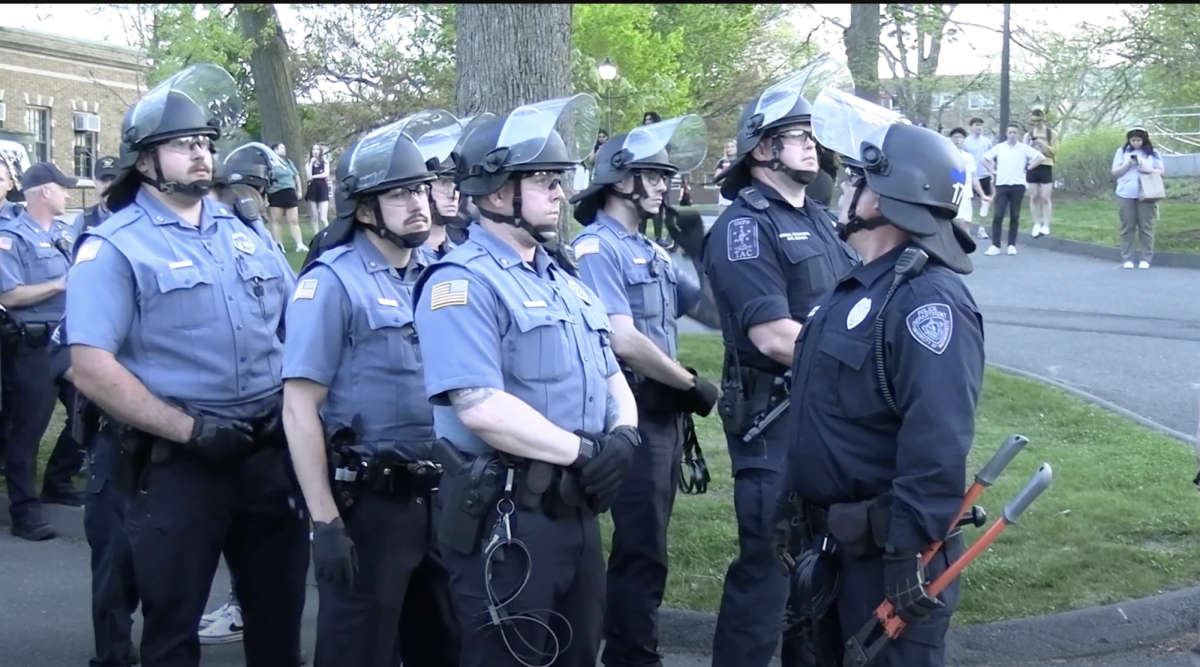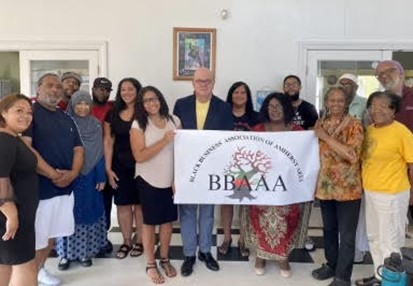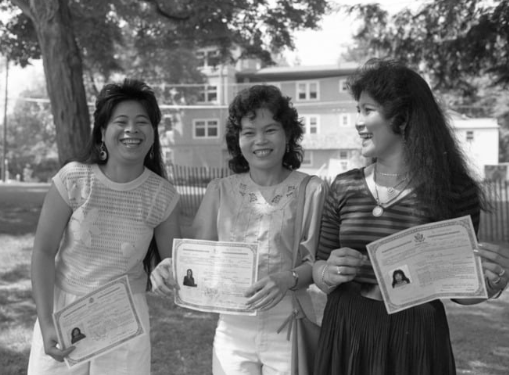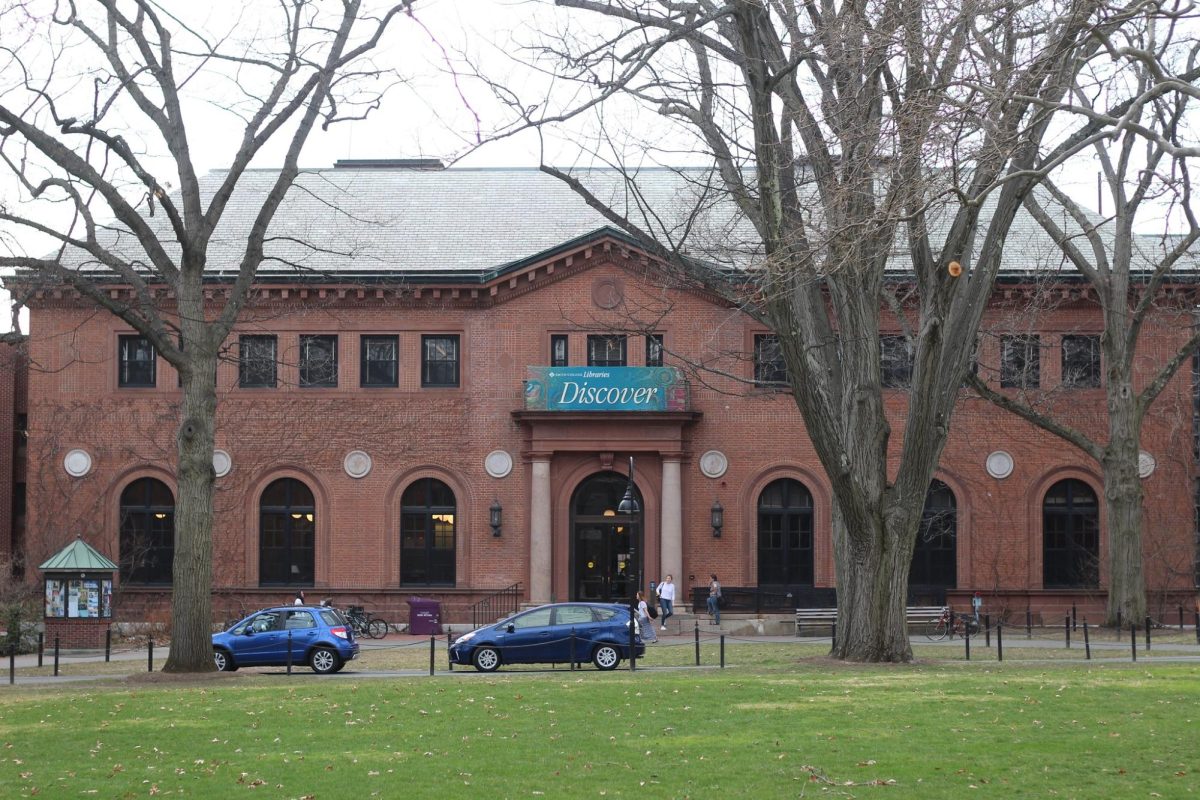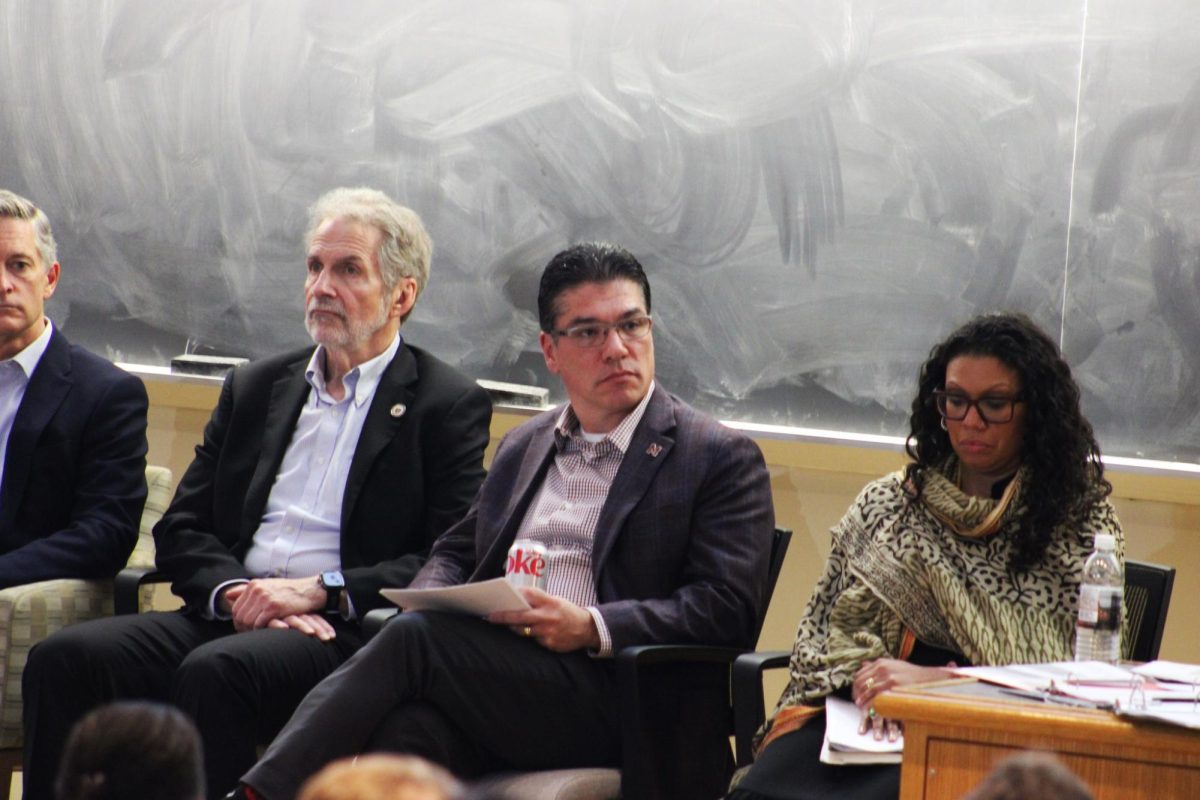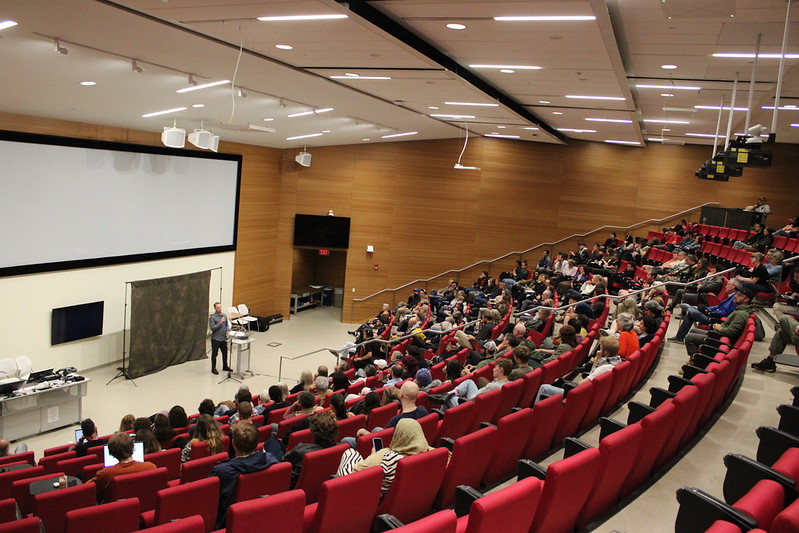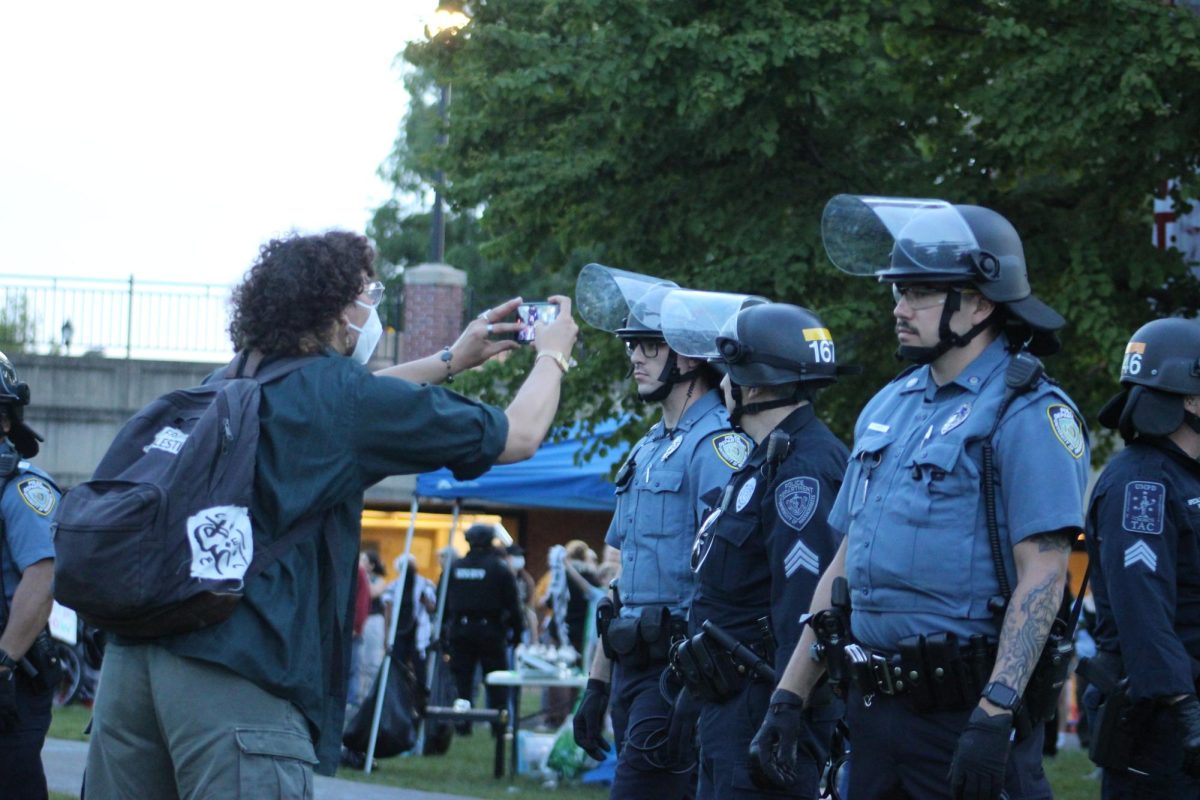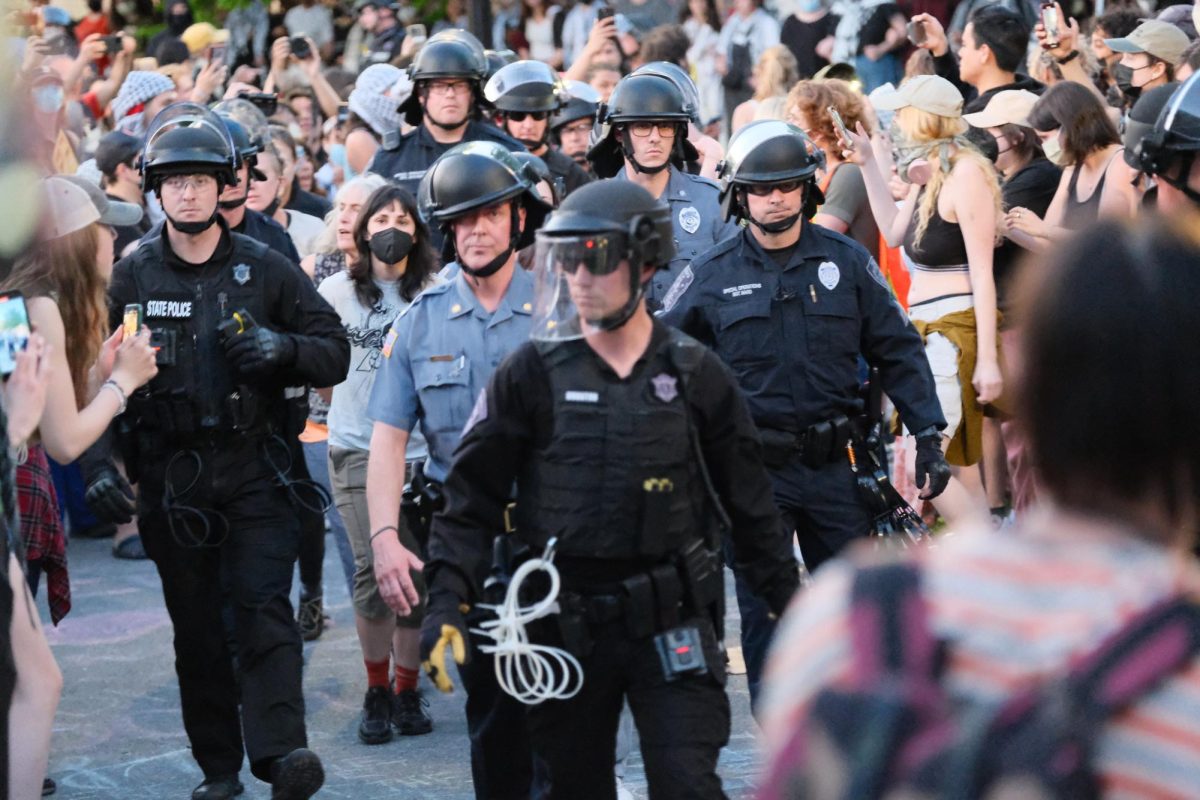
Heated exchanges shot through the air of Mahar Auditorium in October 1977, when opposing teams debated the then-recently argued United States Supreme Court case “Regents of the University of California v. Bakke,” which would upend affirmative action programs across the country when decided the following spring.
Rejected from the University of California-Davis Medical School twice, Allan Bakke, a white man, had sued the UC system for discrimination “solely on the basis of (his) race.”
Students leaving the hall commented on the debate’s aggressive tone, Mark Horan wrote in the Oct. 13, 1977, edition of The Massachusetts Daily Collegian. While the team opposing racial quotas cautiously accepted America’s racist history, they argued that alternative methods, such as recruitment or improving public schools, were needed. Former UMass Afro-American Studies Professor Plaisel Benjamin retorted that the anti-quota team did not understand American history, contributing to the hot tempers in Mahar.
Nearly 40 years later, similar arguments rile the University of Massachusetts campus, from incidents of racial violence in October 2014, to a policy instituted this February banning new admissions of Iranian students interested in studying petroleum or nuclear energy and the failure of the University to keep up with statewide demographic shifts.
Non-white enrollment falls during the 1980s
The following figures have been compiled using data publicly available from the UMass Office of Institutional Research and the U.S. Census Bureau, and show black, Hispanic, Asian and white enrollment at UMass from 1974 to 2014 and statewide population data for the same groups.
From 1976 to 1981, the 700 black undergraduates represented more than half of the entire non-white population at UMass. Black enrollment fell to under 500 students in 1982 – lower than it had been through much of the 1970s – and remained low until the mid-1990s.
Black enrollment reached 700 students again, but only in the face of significantly greater increases in underrepresented minority – black, Hispanic, Native American – and non-white – underrepresented minority plus Asian – enrollment.
Non-white and underrepresented minority enrollment surpassed 1,500 students in 1990, the same year that Asian students, then 2.8 percent of the University’s undergraduate population, became overrepresented relative to the Asian population share of Massachusetts, 2.5 percent.
In recent Massachusetts history, non-white undergraduate enrollment has approached or slightly surpassed the non-white share of the state’s population. Before “Bakke,” non-white enrollment as a percentage of students nearly approached the statewide share, and black enrollment surpassed the black share of the population from 1976 to 1979.
But in the 1980s, the non-white share of the undergraduate population fell back to the lows seen in the early 1970s. Hispanic enrollment stayed around half of the statewide population share throughout the 1980s. It crept up in the latter half of the decade, but fell again in the early 1990s.
While the black and Hispanic share of Massachusetts’s population more than doubled from 1974 to 1990, black and Hispanic enrollment changed little. It wasn’t until 1990 that underrepresented minority enrollment returned to late 1970s levels, and in 1991, when Asian students were no longer underrepresented, the level dropped back to the lows seen in the early 1970s and again in the early 1980s.

A narrower definition of race
The “Bakke” decision, written by Justice Lewis Powell in the summer of 1978, largely took the position of the anti-quota team from the previous fall’s debate. Racial quotas were unconstitutional, but race could still be one of many factors used to determine admittance.
In the July 12, 1978, edition of the Daily Collegian, Sheldon Goldman, political science professor, said Powell decided to “ignore the whole sordid history of racial discrimination. (Powell) said that as far as the law was concerned, there is no such thing as racism. That’s not very realistic.”
“We certainly hope it won’t affect us, but realistically we know that it will,” Committee for the Collegiate Education of Black Students Assistant Director Carol Miranda said. “Our title alone may come up for scrutiny.”
CCEBS became CMASS, the Center for Multicultural Advancement and Student Success, in 2010.
The number of non-white undergraduates is five times higher than 40 years ago, but there are also more undergraduates in general. While total undergraduate enrollment hovered near 19,000 until 2004, that number has increased to 22,500 over the past 10 years, which also corresponds with the largest increase in non-white enrollment since the 1970s.
Two 2003 challenges to affirmative action admissions policies at the University of Michigan further impacted UMass.
“Gratz v. Bollinger” found the point system used at UMass, and often used to replace the quota system around the country, unconstitutional. The companion case “Grutter v. Bollinger” upheld the “narrowly tailored use of race in admissions decisions.”
Prior to “Gratz,” minority applicants could be awarded half a point out of 10 total points on undergraduate applications. Joe Marshall of CCEBMS said it may not have seemed like much, but the half point helped significantly, according to the Nov. 6, 2003 edition of the Daily Collegian. In the same piece, Director of Student Legal Services Chuck DiMare said over 35 categories can be considered in the process, but only race “won’t pass consistently.”
UMass now has to consider race in an even more holistic way, incorporating it through less exacting means than quotas or points, such as essays, personal statements and recruitment programs.
Underrepresentation by the numbers

The percentage share of white enrollment has shrunk slightly since the 1970s, but the absolute number of white students at UMass is about the same as it was then, as is the absolute number of black students. Constant black and white enrollment does not reflect changes in the state’s demographics.
Black Americans as a share of the Massachusetts population have grown from 4 percent to nearly 9 percent since 1974, but only 4 percent of enrolled undergraduates at UMass are black.
More than 10 times as many Hispanic Americans live in the Commonwealth in 2014 than did in 1974, but the Hispanic share of enrollment has only quadrupled.
Asian students have been overrepresented relative to the share of the state’s population since 1990. With over 8 percent of undergraduate enrollment, Asian students were overrepresented by nearly 2.5 percent in 2014. Overall, combined non-white enrollment shot up during the 1990s, mostly due to significant growth in the Asian student community.
Historical parallels
In November 1968, a black student, James R. Hall, and a white friend were attacked on Orchard Hill by a group of five white students, who told them that “n*****s don’t belong at UMass anymore” because Nixon had won the previous day’s election, according to Lost UMass.
When black student Dan Brown rear-ended a white student on Infirmary Way in 1970, the area exploded into a fistfight joined by black and white students taking sides in what sources at the time described as a “race riot.”
Black students retreated into Mills House, expelling the white students and barricading the building with furniture in order to occupy the building. The students set forth a list of demands, which the administration accepted, turning Mills into New Africa House, home of the “Black Cultural Center,” and founding the Afro American Studies department.
Racist attacks on students continue to highlight the effects of underrepresentation and racism in campus and national history. Messages referencing Spanish speakers not speaking English, or speaking with an accent appeared on several residence hall room doors, and “KILL THESE N*****S!!” was etched into Josh Odam’s door over the weekend of Oct. 11 to 12, 2014, when he was at Ferguson protests in Missouri.
However, the gathering of community members for a town hall-style meeting, where students were allowed to voice opinions publicly and talk to Chancellor Kumble Subbaswamy and Vice Chancellor of Student Affairs and Campus Life Enku Gelaye, represented a significant procedural departure from the reconciliation of racist or racially motivated attacks in the 1960s and 1970s. No occupation was necessary.
Members of the Chancellor’s Diversity Planning Steering Committee proposed initiatives to recruit and retain underrepresented, low-income and first-generation students in November 2014, according to the Collegian, which could have an impact on the enrollment of students from underrepresented groups.
Since 1974, non-white enrollment has nearly tripled, but the share of enrollment of underrepresented minorities has gone up only 4 percent.
Over that time, the state’s population of groups underrepresented in the student population of UMass doubled, from nine percent to 18 percent.
Terms that have been used were taken from the Office of Institutional Research.
Zac Bears can be reached at [email protected] and followed on Twitter @zac_bears.





